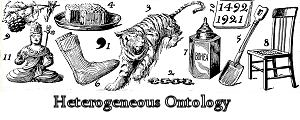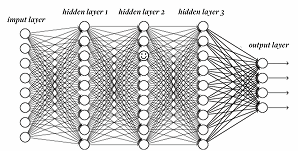 Is downward causation the answer? Does it explain how consciousness can be a real and important part of the world without being reducible to physics? Sean Carroll had a sensible discussion of the subject recently.
Is downward causation the answer? Does it explain how consciousness can be a real and important part of the world without being reducible to physics? Sean Carroll had a sensible discussion of the subject recently.
What does ‘down’ even mean here? The idea rests on the observation that the world operates on many distinct levels of description. Fluidity is not a property of individual molecules but something that ’emerges’ when certain groups of them get together. Cells together make up organisms that in turn produce ecosystems. Often enough these levels of description deal with progressively larger or smaller entities, and we typically refer to the levels that deal with larger entities as higher, though we should be careful about assuming there is one coherent set of levels of description that fit into one another like Russian dolls.
Usually we think that reality lives on the lowest level, in physics. Somewhere down there is where the real motors of the universe are driving things. Let’s say this is the level of particles, though probably it is actually about some set of entities in quantum mechanics, string theory, or whatever set of ideas eventually proves to be correct. There’s something in this view because it’s down here at the bottom that the sums really work and give precise answers, while at higher levels of description the definitions are more approximate and things tend to be more messy and statistical.
Now consciousness is quite a high-level business. Particles make proteins that make cells that make brains that generate thoughts. So one reductionist point of view would be that really the truth is the story about particles: that’s where the course of events is really decided, and the mental experiences and decisions we think are going on in consciousness are delusions, or at best a kind of poetic approximation.
It’s not really true, however, that the entities dealt with at higher levels of description are not real. Fluidity is a perfectly real phenomenon, after all. For that matter the Olympics were real, and cannot be discussed in terms of elementary particles. What if our thoughts were real and also causally effective at lower levels of description? We find it easy to think that the motion of molecules ’caused’ the motion of the football they compose, but what if it also worked the other way? Then consciousness could be real and effectual within the framework of a sufficiently flexible version of physics.
Carroll doesn’t think that really washes, and I think he’s right. It’s a mistake to think that relations between different levels of description are causal. It isn’t that my putting the beef and potatoes on the table caused lunch to be served; they’re the same thing described differently. Now perhaps we might allow ourselves a sense in which things cause themselves, but that would be a strange and unusual sense, quite different from the normal sense in which cause and effect by definition operate over time.
So real downward causality, no: if by talk of downward causality people only mean that real effectual mental events can co-exist with the particle story but on a different level of description, that point is sound but misleadingly described.
The thing that continues to worry me slightly is the question of why the world is so messily heterogeneous in its ontology – why it needs such a profusion of levels of description in order to discuss all the entities of interest. I suppose one possibility is that we’re just not looking at things correctly. When we look for grand unifying theories we tend to look to ever lower levels of description and to the conjectured origins of the world. Perhaps that’s the wrong approach and we should instead be looking for the unimaginable mental perspective that reconciles all levels of description.
Or, and I think this might be closer to it, the fact that there are more things in heaven and earth than are dreamt of in anyone’s philosophy is actually connected with the obscure reason for there being anything. As the world gets larger it gets, ipso facto, more complex and reduction and backward extrapolation get ever more hopeless. Perhaps that is in some sense just as well.
(The picture is actually a children’s puzzle from 1921 – any solutions? You need to know it is called ‘Illustrated Central Acrostic’)

 How far back in time do you recognise yourself? There may be long self-life and short self-life people; speculatively, the difference may even be genetic.
How far back in time do you recognise yourself? There may be long self-life and short self-life people; speculatively, the difference may even be genetic. OUP Blog has a sort of
OUP Blog has a sort of  Interesting piece
Interesting piece  Can we solve the Hard Problem with scanners? This
Can we solve the Hard Problem with scanners? This